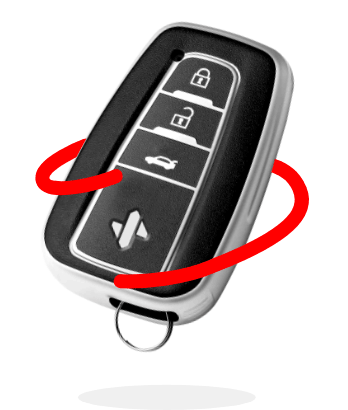Buying a new car is an exciting time, but it’s important to ensure you have the right insurance. To protect yourself and your new car, it’s essential to understand how car insurance works and what type of coverage you need. In this post, we’ll cover everything you need to know about insuring your new car.
5 TYPES OF CAR INSURANCE COVERAGE FOR NEW CARS
With so many car insurance options, deciding which ones best fit your needs is hard. That’s why we’re breaking down the five main types of car insurance coverage so that you can decide which ones are right for you.
1. Liability & Property Damage
Liability and property damage coverage is the most common type of auto insurance. This coverage helps pay for property damage and bodily injury costs caused by an accident in which you’re at fault.
In some states, liability coverage is required by law, but even if it isn’t, it’s still a good idea to have this coverage in case of an accident. Liability coverage usually includes two components: bodily injury liability and property damage to others liability.
2. Collision Coverage
Collision coverage helps cover the cost to repair or replace your vehicle if it’s damaged in an accident — no matter who’s at fault.
3. Comprehensive Coverage
Comprehensive coverage helps pay for damage to your vehicle caused by something other than a collision — like theft or vandalism — or “acts of God,” such as hail or flooding.
Comprehensive is optional if you do not have a loan on your vehicle but recommended because these damages can be expensive to fix without insurance help.
4. Personal Injury Protection (PIP)
In many states, Personal Injury Protection (PIP) covers medical expenses and lost wages resulting from injuries sustained in an accident, regardless of who was at fault. PIP can also cover funeral costs should someone die because of an automobile-related incident; this makes PIP a great option for anyone concerned about how their family would manage financially in the event of their death because of a car crash.
PIP is required in some states but optional in others; check with your state’s DMV before purchasing this type of policy so that you know whether it is mandatory where you live and drive regularly.
5. Uninsured/Underinsured Motorist Coverage
Uninsured/Underinsured Motorist Coverage protects against any financial losses incurred when another driver causes an accident, and either doesn’t have enough insurance (underinsured) or none (uninsured).
Like PIP, this type of policy varies state by state, so consult your local DMV or insurance agent before purchasing uninsured/underinsured motorist protection. That way, you’ll ensure that it complies with all applicable laws where you live and drive regularly.
Now that we’ve broken down the five main types of auto insurance available, hopefully, deciding on the kind (s) that meet your needs won’t feel so overwhelming! Always check with your local DMV before buying any kind of car insurance policy to ensure everything complies with current regulations where you live and drive regularly.
Beyond that, consider these five coverages when shopping around for auto policies so that you get all the protection needed without overpaying for unnecessary add-ons!
HOW MUCH CAR INSURANCE COVERAGE DO I NEED?
The amount of coverage you need depends on several factors, such as your income and wealth, the value of your car, where you live and drive, and the laws in your state. Generally, it’s a good idea to have at least enough liability coverage to cover your assets as well as the cost of repairing any damage you cause while driving your new car.
It’s also wise to consider collision and comprehensive insurance for added protection against physical damage caused by an accident or other events like theft or fire.
IS THERE A GRACE PERIOD TO ADD A NEW CAR TO YOUR EXISTING POLICY?
Once you have purchased a new car, it’s essential that you get it added to your insurance policy as soon as possible. Most policies require adding a newly gained vehicle within 30 days of purchase, but exclusions may apply based on your existing coverage. Add the new vehicle to your policy before taking possession of the car is recommended.
HOW TO GET NEW CAR INSURANCE POLICY
Nervous about getting new car insurance? Don’t feel overwhelmed — finding the best coverage for your vehicle doesn’t have to be intimidating, especially when you have all the information in front of you.
We’ll show you how to get a quote, compare policies and providers, and save money without sacrificing quality.
Step 1: Compare Rates From Different Providers
The first step in getting insurance for your new car is to compare rates from different providers. By comparing rates, you can ensure you get the best policy deal. You can use an online comparison tool to find out what deals are available or contact different providers directly and request quotes.
Step 2: Choose an Appropriate Policy
Once you’ve compared rates from different providers, it’s time to choose an appropriate policy. As you’ve learned, multiple coverage options are available, so make sure you understand what each one offers before deciding.
You should also ensure that your chosen policy meets all state requirements and provides enough coverage for any accidents or damages while driving your new car.
Step 3: Gather the Documents
Before purchasing an insurance policy, you must gather certain documents to complete the process. These documents include proof of ownership (title) for the vehicle being insured, driver’s license information (including Social Security Numbers), and any other relevant documentation such as proof of residence or financial statements related to the purchase of the vehicle being insured.
Having these documents readily available will help streamline the process and ensure that everything goes as smoothly as possible.
Step 4: Set A Date
Establishing an effective date for your chosen policy is a critical step in car buying. Effective dates must ensure that you and your car are covered adequately with the right coverage at the right time.
While setting an effective date can seem like a minor detail, it’s critical to coordinate the policy and vehicle purchase so there are no gaps in coverage.
Step 5: Purchase Your Policy
The last step in getting insurance on a new car is to purchase your policy! Once all necessary documents and paperwork have been gathered, submit them along with payment information and wait for confirmation from your provider. Then, drive off with peace of mind knowing that you have adequate coverage in place should something unfortunate happen while owning your vehicle!
Getting insurance on a new car isn’t as daunting as it may seem — by following these five steps outlined above, anyone can easily find and secure coverage for their vehicle quickly and without hassle.
Whether through research online or contacting different providers directly, always remember to compare rates from other companies before deciding — this way knowing that you’ll know you’re protected and getting the best possible deal when it comes time to purchase car insurance coverage.
If you need help finding the best car insurance coverage for the best price, start by speaking to a SimplyIOA agent at 833.872.4467 or get an auto insurance quote online now.










